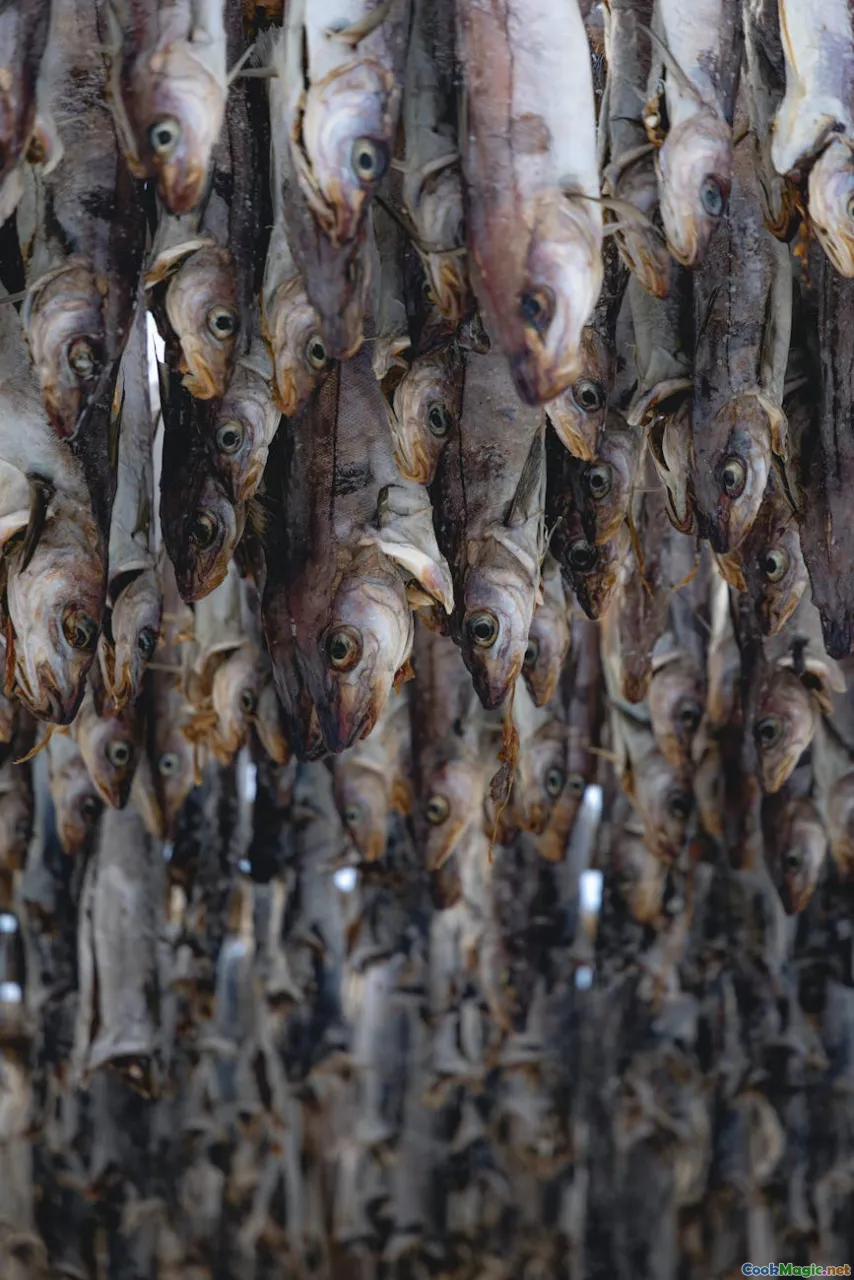Preserving Fish The Art of Irish Smoking Methods
8 min read Discover the rich history and meticulous craft behind Irish fish smoking methods, a timeless tradition that elevates seafood to culinary art. May 13, 2025 09:00
Preserving Fish: The Art of Irish Smoking Methods
Ireland’s rugged coastline and abundant waters have long nurtured a deep connection between its people and seafood. Among the many methods of preserving fish—salting, drying, fermenting—smoking stands out as a particularly storied tradition, blending practicality with artistry. This article takes you on a journey through the centuries-old Irish craft of smoking fish, revealing its cultural significance, intricate techniques, and sensory delights.
The Cultural and Historical Significance of Irish Fish Smoking
Ireland's relationship with seafood dates back thousands of years. Coastal communities relied heavily on fish not only as a vital food source but also as a cultural symbol of resilience and ingenuity. Smoking fish emerged as an essential preservation method—allowing communities to store their bounty for the leaner months, especially during winter.
Historically, Irish fishermen and women developed smoking techniques that were passed down through generations. These methods became embedded in local traditions, with specific styles linked to regions such as Connemara, Donegal, and Kerry. For example, in the remote villages of Donegal, smoking was as much an art form as it was a livelihood, with family-run smokehouses serving as community hubs.
As Irish society modernized, these traditional practices faced challenges from industrial methods, yet the artisanal craft persisted, celebrated as an integral part of Ireland’s culinary identity. Today, Irish smoked fish—particularly smoked salmon, trout, and mackerel—are prized both locally and internationally, embodying a rich heritage.
The Craft of Irish Fish Smoking: An Artistic Process
Selecting the Fish
The journey begins with choosing the right fish. Irish waters are renowned for wild salmon, sea trout, mackerel, and pollock. The quality of the fish is paramount; it must be fresh, firm, and have a clean aroma that hints at the briny depths.
Preparing the Fish
Once selected, the fish are carefully cleaned—gutting, removing scales, and sometimes filleting—while preserving the integrity of the flesh. This preparation stage is crucial, as it influences the smoking outcome.
The Brining Process
Traditionally, Irish smoked fish undergoes a brining process, which enhances flavor and aids preservation. The fish are submerged in a mixture of sea salt, sugar, and sometimes aromatic herbs like dill or juniper berries. This curing step can last from a few hours to several days, depending on the desired intensity.
The salt not only draws out moisture but also acts as a natural preservative, creating an environment inhospitable to bacteria. The addition of sugar balances the saltiness and can impart a subtle sweetness.
The Smoking Technique
Irish smoking methods are largely split into two categories: cold smoking and hot smoking.
Cold Smoking
Cold smoking is the traditional Irish method, prized for producing delicate, flaky, and intensely flavored fish. The process involves exposing the fish to smoke at temperatures below 30°C (86°F), often around 20°C (68°F). This slow process can take from several hours up to two days.
The key to successful cold smoking lies in the choice of wood. Irish artisans favor hardwoods like oak, apple, or ash, which produce a mild, aromatic smoke. The smoke infuses the fish gradually, preserving its raw-like texture while adding layers of complex flavor.
Hot Smoking
Hot smoking, on the other hand, involves higher temperatures—around 60-80°C (140-176°F)—which cook the fish during the smoking process. This method results in a firmer texture and a more pronounced smoky flavor. While less traditional in Irish cuisine, hot smoking has gained popularity for its efficiency and the rich, cooked taste it imparts.
The Smokehouse: An Irish Institution
Traditional Irish smokehouses are often small, wood-paneled structures nestled along the coast or in rural villages. These humble buildings are the heart of the smoking process, where the magic happens. The process is labor-intensive, requiring constant monitoring of temperature, humidity, and smoke quality.
In modern times, many Irish producers blend tradition with innovation—using environmentally friendly wood sources and refining airflow controls to perfect their craft.
Sensory Experience: Tasting Irish Smoked Fish
Irish smoked fish is a sensory celebration. The aroma is a captivating mix of salty brine and sweet, woody smoke—evoking images of misty mornings by the sea. The texture is tender yet firm, with a melt-in-the-mouth quality that lingers.
The flavor profile balances the natural sweetness of the fish with a smoky depth that enhances its intrinsic umami. A well-smoked Irish salmon, for example, boasts a velvety flesh with a subtle saltiness and a hint of aromatic woods.
Serving suggestions include simple platters with Irish brown bread, butter, and perhaps a squeeze of lemon—letting the smoky flavors shine. It’s also perfect flaked into salads, atop hearty Irish stews, or incorporated into modern culinary creations.
Personal Reflections and Modern Revival
Having visited Irish coastal villages and watched artisans work their smokehouses, I’ve developed an enduring appreciation for this age-old craft. The patience, skill, and reverence for tradition are palpable in every piece of smoked fish.
Today, a new generation of Irish producers is reviving these methods, emphasizing sustainability and artisanal craftsmanship. Farmers and fishermen are collaborating with local smokehouses, ensuring that Ireland’s smoked fish remains a symbol of quality and cultural pride.
Conclusion: A Timeless Tradition Worth Preserving
The art of Irish fish smoking is more than just a preservation technique; it’s a cultural expression that captures the rugged beauty, resourcefulness, and culinary ingenuity of Ireland’s coastal communities. As you indulge in Irish smoked salmon or trout, you're tasting centuries of history, tradition, and artistry.
Next time you savor a piece of smoked fish, pause to appreciate the centuries of craftsmanship behind it—a delicious testament to Ireland’s enduring connection with the sea and its rich culinary heritage.









